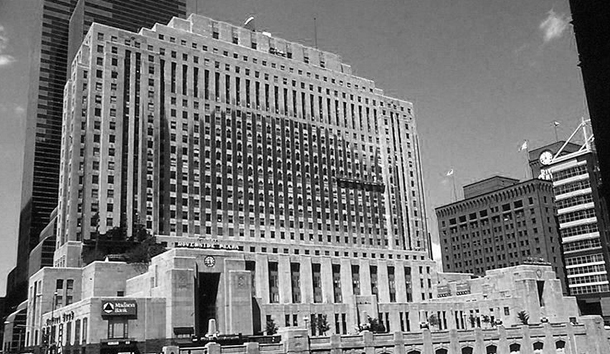Those who work for what today pass as newspapers often deserve the criticism directed at them for their lack of objectivity, sloppy reporting, and elitism. Having long abandoned the singular mission of informing their readers so that they may be able to make informed decisions about complex issues, these papers have degenerated into nothing more than corporate profit centers and lapdogs for many special interest groups.
In all fairness, however, it must be said that the greed and pandering may not be the only forces at work within the industry. Perhaps a once noble industry is only responding to our growing demand to be entertained rather than informed. How else can we explain the proliferation of vacuous television “news magazines,” talk shows, celebrity interviews, and anything else that requires little or no intellectual effort?
There was a time when accurate, straightforward news was the norm, grammar was emphasized, and reporters were all too willing to make that “one last call.” I was reminded of all that once again—of how good it was, how exciting it was—when I joined former colleagues at the 17th annual Chicago Daily News reunion held in June at Chicago’s legendary Billy Goat Tavern & Grill.
A dimly lit place on lower Michigan Avenue that reeks of cooking grease and beer, the Goat once was a favorite gathering place for the legends of Chicago journalism, and its walls are covered with their photographs. And thanks to the late actor/comedian John Belushi and his wake crew during the early years of Saturday Night Live, even the most reclusive among us knows that “Chiz-burger! Chiz-burger!” is a daily refrain echoed by the Goat’s short-order cooks.
Today, however, the place is frequented mostly by marketing, p.r., and MBA types whose primary goals in life are instant gratification and a quick buck. Not one of these “new communicators” could probably tell you the difference between hot type and a hot tub. Known as a “writers’ paper,” the 102-year-old News died in March 1978 with 15 Pulitzer Prizes to its credit. Beginning in the late 1960’s, this great newspaper suffered the indignity of repeated style changes in hopes of satisfying a new generation of readers who now preferred television news to the written word. Many of us have seen the routine before: profits begin to slip and in come the “consultants,” to urge switching to new type faces, harebrained features, and incorporating, oh yes, plenty of pictures.
But it was too late, and all that was left for then publisher Marshall Field, who knew as much about the business as I know about piloting the Space Shuttle, was to pull the plug during a little speech he delivered while standing on someone’s desk.
I joined the News as a copyboy when I was 17 and right out of high school. It was a time when an editor’s only responsibility was to get the very best from his reporters and publish a paper that gave its readers their money’s worth. These editors cared deeply about quality and read nearly every column of the city’s other newspapers that worked diligently to scoop everyone else. God help the reporter who missed a fact that made us look as though we had been asleep at the switch.
On those occasional Friday night shifts, my job included two trips in a News circulation truck to a newsstand several blocks away to pick up several copies of the competitors’ “rags,” which our editors jumped on and pored over like a kid attacking his presents on Christmas morning. In the winter, speeding along Madison Street in that truck with both doors open was just plain cold; in the summer, it was great. Those early-morning rides often included watching the dawn break over the city or, on a more somber note, the fire department as it dragged the Chicago River for the body of some poor wino who staggered off a loading dock, or that of someone who just decided that enough was enough.
It was also a time when columnist Mike Royko was just another nightside reporter, and nobody really got bent out of shape if you drank your lunch now and then, provided that you didn’t miss a deadline. But most of all, it was time for people like the late writer Eddie Eulenberg and copy editor Angelo “Angie” Biondo.
Eddie, a large, pleasant man who always had a nice word for everyone, is credited with coining the phrase that editors used to warn young reporters about taking what they hear at face value: “If your mother says she loves you, make her prove it.” (He later said that was wrong; what he really said was, ” . . . kick her in the knee and make her prove it.”) Angie worked in the Sports Department and, like Eddie, never was too busy to stop by the copyboy’s bench to say hello or ask if we might want a couple of tickets to a baseball game.
During the reunion at the Goat, Angie came over to where I was standing, stuck out his hand, and asked if I remembered him. He seemed pleased that I did and said, “My eyes aren’t so good anymore, but I recognized you right away.”
I doubt that the caliber of people with whom I worked will ever again be given leadership roles in tomorrow’s city rooms, because their kind are out of place in a society that has become self-absorbed and shortsighted. So here’s to the Eddie Eulenbergs and Angie Biondos and the rest of those wonderful Daily News people, ordinary people who often did extraordinary things that resulted in a product worth far more than what it sold for on the newsstand.

Leave a Reply